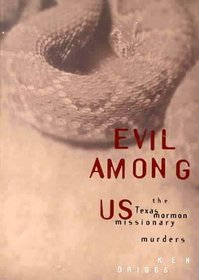Search -
Evil Among Us: The Texas Mormon Missionary Murders
Evil Among Us The Texas Mormon Missionary Murders
Author:
Introduction About a year after arriving in Texas in 1993 as an attorney, I chanced upon newspaper reports of the 1974 incredibly brutal murders of young Mormon missionaries Gary Darley and Mark Fischer. I recalled hearing about them years earlier in my own LDS congregation when the news first broke, and started investigating the case with an ey... more »
Author:
Introduction About a year after arriving in Texas in 1993 as an attorney, I chanced upon newspaper reports of the 1974 incredibly brutal murders of young Mormon missionaries Gary Darley and Mark Fischer. I recalled hearing about them years earlier in my own LDS congregation when the news first broke, and started investigating the case with an ey... more »
ISBN-13: 9781560851387
ISBN-10: 1560851384
Publication Date: 8/2000
Pages: 290
Rating: 1
ISBN-10: 1560851384
Publication Date: 8/2000
Pages: 290
Rating: 1
3 stars, based on 1 rating
Genres:




